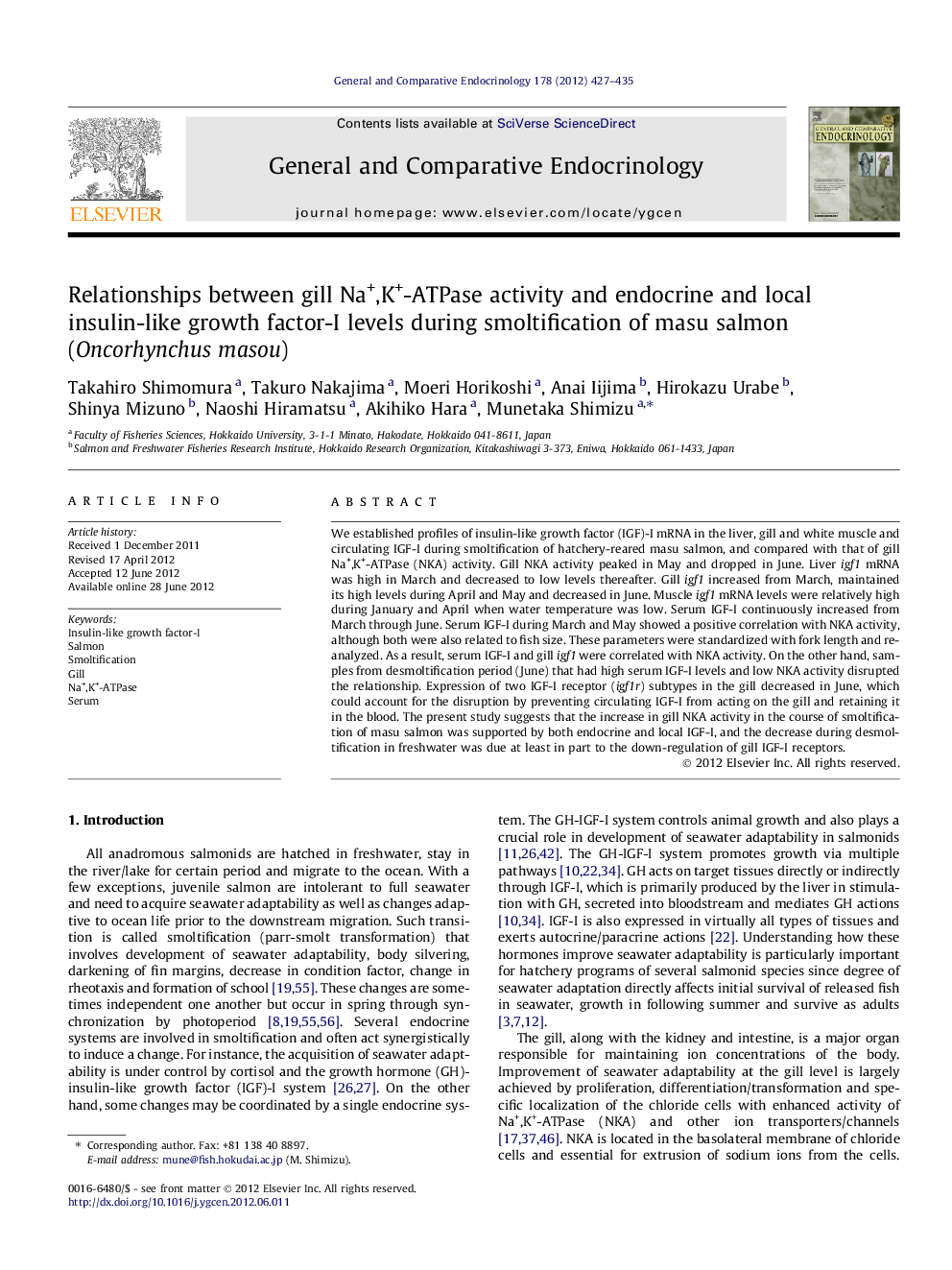| Article ID | Journal | Published Year | Pages | File Type |
|---|---|---|---|---|
| 2800502 | General and Comparative Endocrinology | 2012 | 9 Pages |
We established profiles of insulin-like growth factor (IGF)-I mRNA in the liver, gill and white muscle and circulating IGF-I during smoltification of hatchery-reared masu salmon, and compared with that of gill Na+,K+-ATPase (NKA) activity. Gill NKA activity peaked in May and dropped in June. Liver igf1 mRNA was high in March and decreased to low levels thereafter. Gill igf1 increased from March, maintained its high levels during April and May and decreased in June. Muscle igf1 mRNA levels were relatively high during January and April when water temperature was low. Serum IGF-I continuously increased from March through June. Serum IGF-I during March and May showed a positive correlation with NKA activity, although both were also related to fish size. These parameters were standardized with fork length and re-analyzed. As a result, serum IGF-I and gill igf1 were correlated with NKA activity. On the other hand, samples from desmoltification period (June) that had high serum IGF-I levels and low NKA activity disrupted the relationship. Expression of two IGF-I receptor (igf1r) subtypes in the gill decreased in June, which could account for the disruption by preventing circulating IGF-I from acting on the gill and retaining it in the blood. The present study suggests that the increase in gill NKA activity in the course of smoltification of masu salmon was supported by both endocrine and local IGF-I, and the decrease during desmoltification in freshwater was due at least in part to the down-regulation of gill IGF-I receptors.
